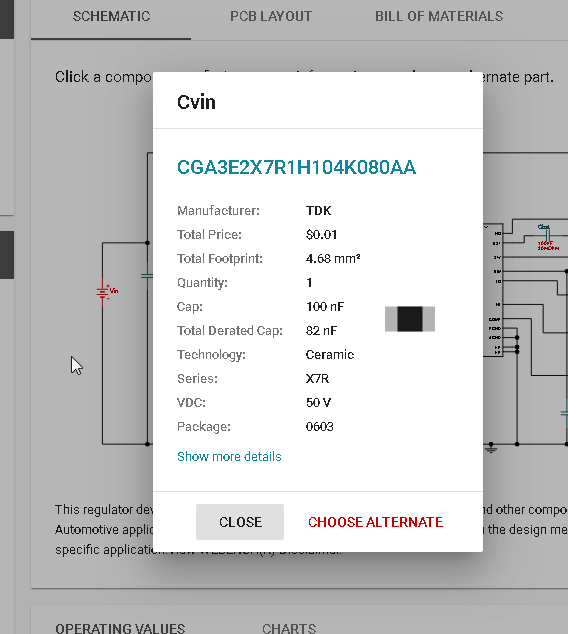Tool/software: WEBENCH® Design Tools
Using the Power Designer App for LM25145, every time the input power source is 20V or higher, the app recommends using Q10 of 10nF 0603 caps on Cvin (internal 7.5V LDO regulator source pin cap). Below 20V, it recommends Q1 100nF 0603.
The LM25145 documentation does not say much about Cvin besides:
"In high voltage applications, take extra care to ensure the VIN pin does not exceed the absolute maximum voltage rating of 55 V during line or load transient events. Voltage ringing on the VIN pin that exceeds the Absolute Maximum Ratings can damage the IC. Use high-quality ceramic input capacitors to minimize ringing. An RC filter from the input rail to the VIN pin (for example, 4.7 Ω and 0.1 μF) provides supplementary filtering at the VIN pin." -- referring to the 45V maximum input value.
In looking deeply at ceramic capacitor specification, the Power Designer recommendation and alternatives all seem strange and excessive.
It looks to me like a single Kemet C1210C106M5RACTU (1210 50V 10uF; @100kHz Z=170mR ESR=13mR; 3.2uF@40V)) is more than sufficient, and has better characteristics than any of the 10x 0603 10nF solutions presented by the Power Designer App. (or a Samsung CL32B106KBJNNWE)
A single TDK C2012X7R1H475K125AC (0805 50V 4.7uF; @100kHz Z=356mR ESR=33mR; 800nF@40V) also looks to be sufficient.
Is there someone who could take a look, see if this is a flaw in the Power Designer App, and if not, point out what factor I a missing?
Thank you very much.


